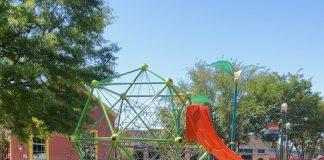Disclosure :: This post was written by Dr. Melanie M. Fowler, a board-certified orthodontic specialist. Learn more about Dr. Melanie M. Fowler Orthodontic Studio HERE.
Retaining That Smile! What You Need to Know About Retainers
 The big day has arrived and the time to reveal your new smile is here! The excitement is palpable! Amid the happy tears, you hear the orthodontist mention something about retainers. Retainers? What? I thought I was finished with braces!!
The big day has arrived and the time to reveal your new smile is here! The excitement is palpable! Amid the happy tears, you hear the orthodontist mention something about retainers. Retainers? What? I thought I was finished with braces!!
Unfortunately, our teeth are not cemented into the bone after orthodontic treatment. No matter how long you’ve worn your braces or clear aligners, your teeth are genetically programmed to return to their original position. And to top it off, as we get older, our teeth can change positions, just like getting wrinkles and cellulite. Bummer, isn’t it? But there’s no reason to worry! Your orthodontist has many options to help those stubborn teeth remain in their new locations!
Retainers come from the word “retain” which literally means to “hold.” Retainers do just that: hold the teeth and they can be either fixed or removable.
- Fixed retainers, also known as permanent retainers, are hidden wires, attached permanently to the inside (tongue side) surface of your teeth. These tiny wires provide enough stability to maintain the position of your teeth. Most orthodontists are able to provide this option on both upper and lower teeth. Each patient is evaluated to make sure permanent retainers are an appropriate choice. Conditions that affect eligibility for permanent retainers include oral hygiene, presence of decay or fillings, and depth of bite. Maintenance of permanent retainers is easy! Just brush and floss them along with the rest of your teeth. Your dentist will check them at your regular 6-month check-ups and your orthodontist is only a phone call away, if you have any questions.
- Removable retainers are ones that are worn only part-time, usually while the patient is sleeping. Studies show that night-time wear of 8-10 hours should provide enough protection against unwanted movement. Your orthodontist may require full-time wear immediately after your braces are removed to help with stability. The biggest advantage to wearing removable retainers is that you are able to brush and floss your teeth without the retainers in place. Different styles are available and your orthodontist will help you decide which type of removable retainer is best for you, including clear alternatives. Maintenance of removable retainers includes cleaning them with retainer cleaner or dishwashing liquid. Removable retainers need to be treated like plastic containers: no scalding hot water, no abrasive cleaners (including toothpaste), and no leaving in a hot environment. Removable retainers will wear out over time, just like your sunglasses or running shoes. Depending on the type of material, you may need replacement retainers every 5-10 years.
- Some patients may need both permanent retainers and a night-time retainer. This is especially true with someone who started with severe crowding or spacing. If you clench or grind your teeth, you may also need a specialized type of retainer called a night guard, or splint. Patients who exhibit TMJ symptoms may need this type of appliance to help protect their teeth from excessive wear over time.
Think of your retainers as your insurance policy. Good retainer wear can preserve your investment in your beautiful new smile!
About the author::
 Dr. Melanie Fowler is a board-certified orthodontist with offices in Lafayette and New Iberia. She has owned her own practice for more than fifteen years, and is also a Clinical Associate Professor at the LSU School of Dentistry Department of Orthodontics in New Orleans. She has a passion for teaching and is the course director for the Orthodontic Journal Club and manages Orofacial Anomaly clinic patients with the residents. She is active in the American Association of Orthodontists, is a past President of the Louisiana Association of Orthodontists, and past Director on the Board of the Southwestern Society of Orthodontists. Melanie also served as the 2020-2021 President of Junior League of Lafayette. She is also a graduate of Leadership Lafayette XXIV and is a past recipient of a Top 20 under 40 award.
Dr. Melanie Fowler is a board-certified orthodontist with offices in Lafayette and New Iberia. She has owned her own practice for more than fifteen years, and is also a Clinical Associate Professor at the LSU School of Dentistry Department of Orthodontics in New Orleans. She has a passion for teaching and is the course director for the Orthodontic Journal Club and manages Orofacial Anomaly clinic patients with the residents. She is active in the American Association of Orthodontists, is a past President of the Louisiana Association of Orthodontists, and past Director on the Board of the Southwestern Society of Orthodontists. Melanie also served as the 2020-2021 President of Junior League of Lafayette. She is also a graduate of Leadership Lafayette XXIV and is a past recipient of a Top 20 under 40 award.


















